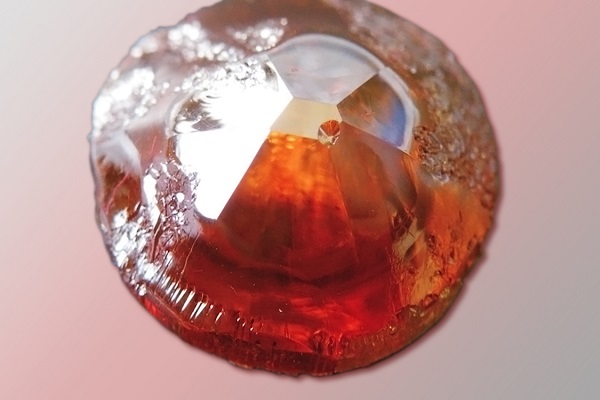New developments by the Bavarian partners cover the entire value added chain
Eco-friendly purification of water – UV light is already being used to kill water-borne germs but the light sources used for this purpose are still predominantly mercury vapor lamps. UV LEDs have so far proved unattractive for reasons of cost. The aim of the UNIQUE project funded by the Bavarian Ministry for Economic Affairs, Media, Energy and Technology is therefore to develop high-power UV LEDs for industrial use. The project, which is being coordinated by Osram Opto Semiconductors, involves five Bavarian companies and research institutions.
 |
|
An aluminum nitride crystal which has to be produced as the basis for the UV LED. (Image: Fraunhofer IlSB) |
In the UNIQUE project, mercury-free LED-based UVC high-power light sources with wavelengths in the 260 to 280 nanometer range are being developed for industrial disinfection processes. There is a wide variety of potential applications – from domestic water purification to industrial disinfection of food packaging. Aluminum gallium nitride light emitting diodes (AIGaN LEDs), a further development of the white, blue or green indium gallium nitride LEDs currently in use, provide the basis. Meeting this objective requires fundamental material, technology and system developments along the entire value added chain.
aprotec GmbH is responsible for the design of a special installation for producing aluminum nitride (AIN) volume crystals by evaporating AlN powder at over 2000 °C. The Fraunhofer Institute for Integrated Systems and Device Technology (IISB) is in charge of developing and optimizing a process chain for producing AlN substrates, which includes everything from the synthesis of high-purity AlN powder and the production of AlN crystals to the manufacture of AlN substrates from the AlN crystals. Osram Opto Semiconductors is developing the UVC LED chip with the associated component epitaxy and processing on the basis of the AlN substrate.
UV LED chips need the protection of a gas-tight package that offers a constant vacuum and therefore a stable atmosphere for the chip. Developing a permanently vacuum-tight package from inorganic UV-stable materials and evaluating the structure and connections are the tasks of SCHOTT AG in Landshut. Finally, Dr. Hönle AG is responsible for integrating the UVC modules in a new disinfection system and conducting the appropriate system tests.
By developing a small, cost-effective, energy-efficient, mercury-free, long-life UV diode the project partners are looking to gain a strong position on the growing market for UV LEDs and use the results of the project to strengthen Bavaria as a location for business. “Our many years of experience in the development of mass market opto semiconductor components will help make the UNIQUE project a success and contribute to bringing the prototype to market at a later date in volume production. Osram Opto Semiconductors is already active in the near UV range. UNIQUE will extend our portfolio into the deep UV range, specifically for disinfection applications”, said Dr. Hans-Jürgen Lugauer, head of UV development at Osram Opto Semiconductors.
The UNIQUE project is scheduled to run from July 2016 to June 2019. It is funded by the Bavarian Ministry for Economic Affairs, Media, Energy and Technology and sponsored by VDI/VDE/IT.











